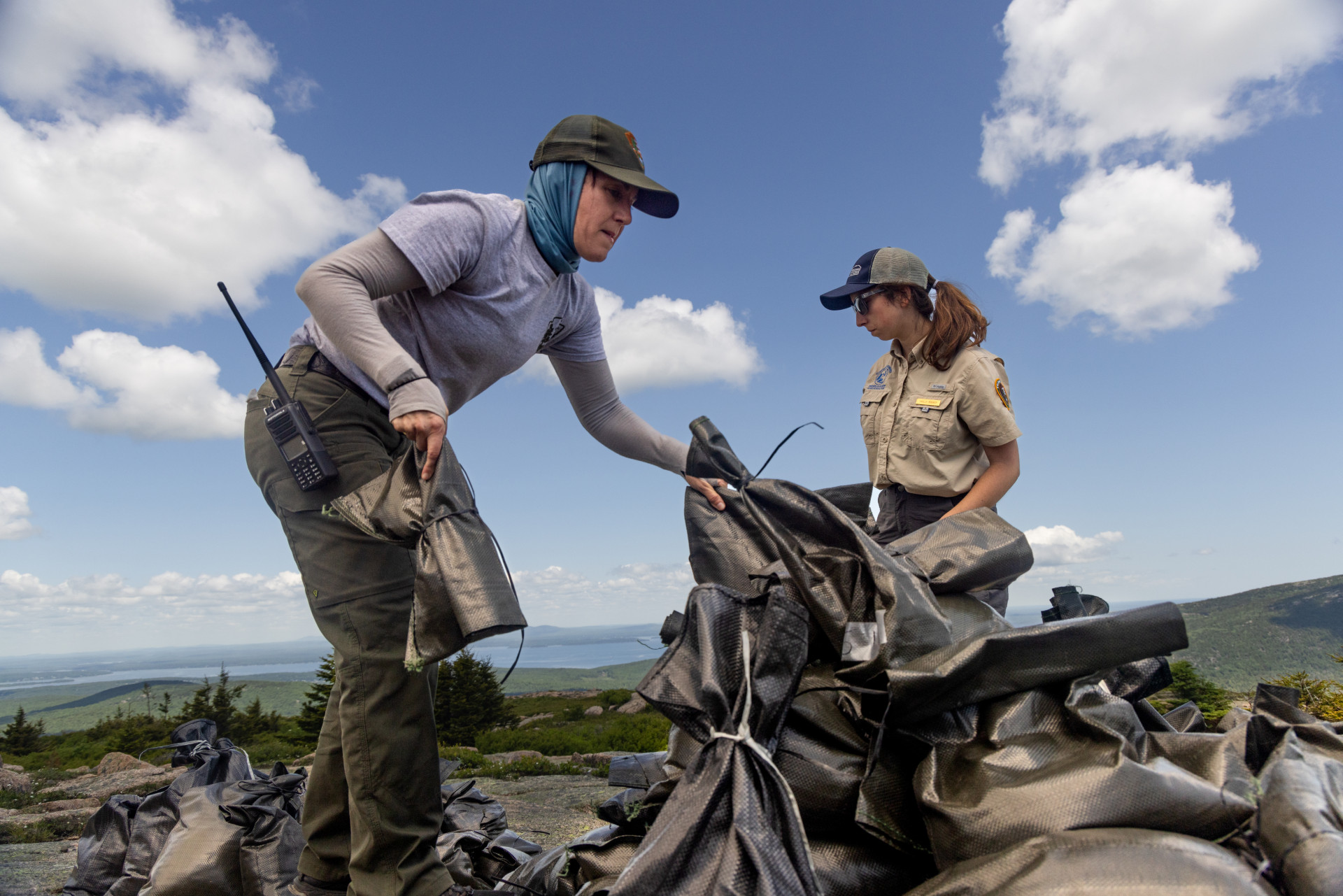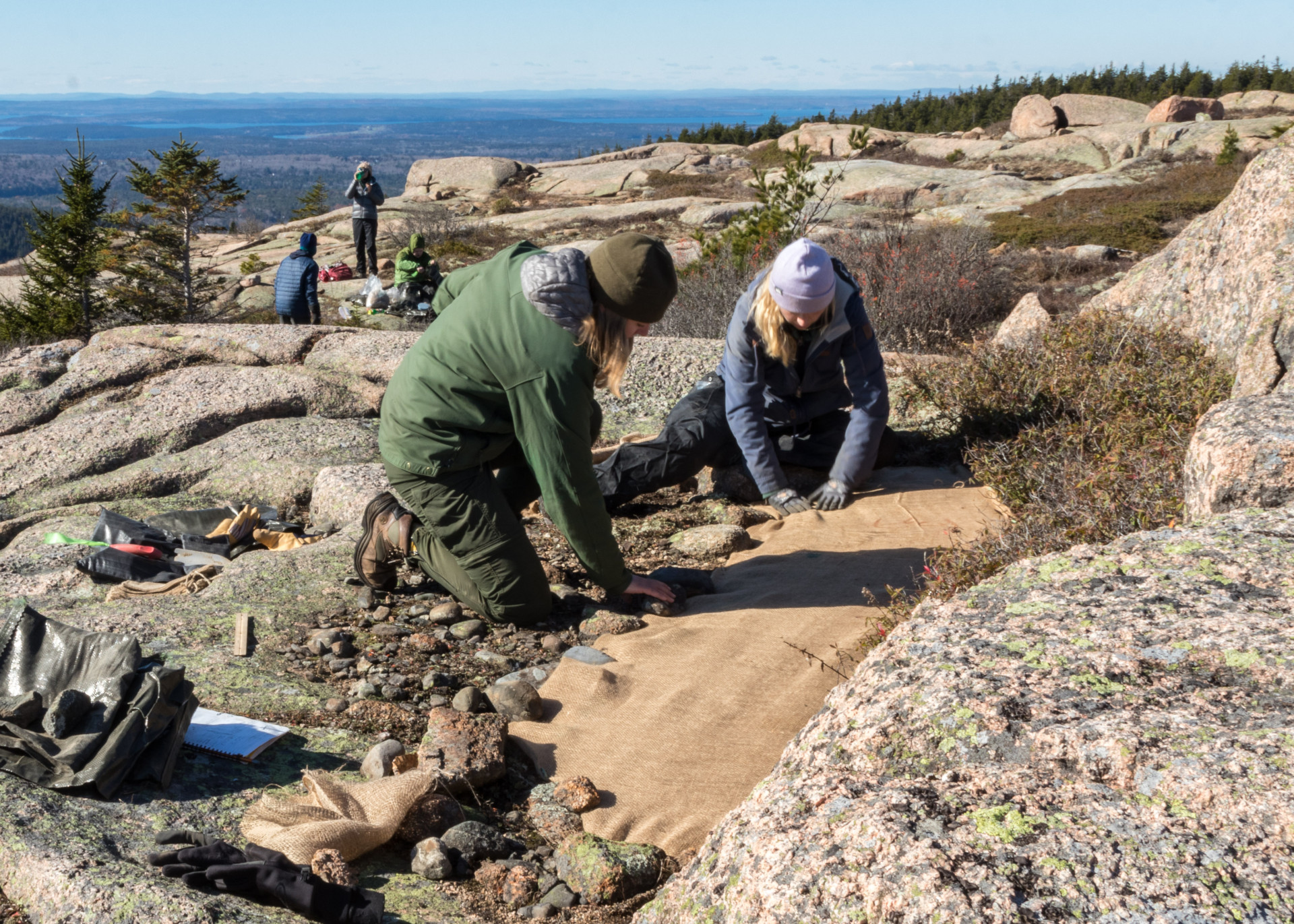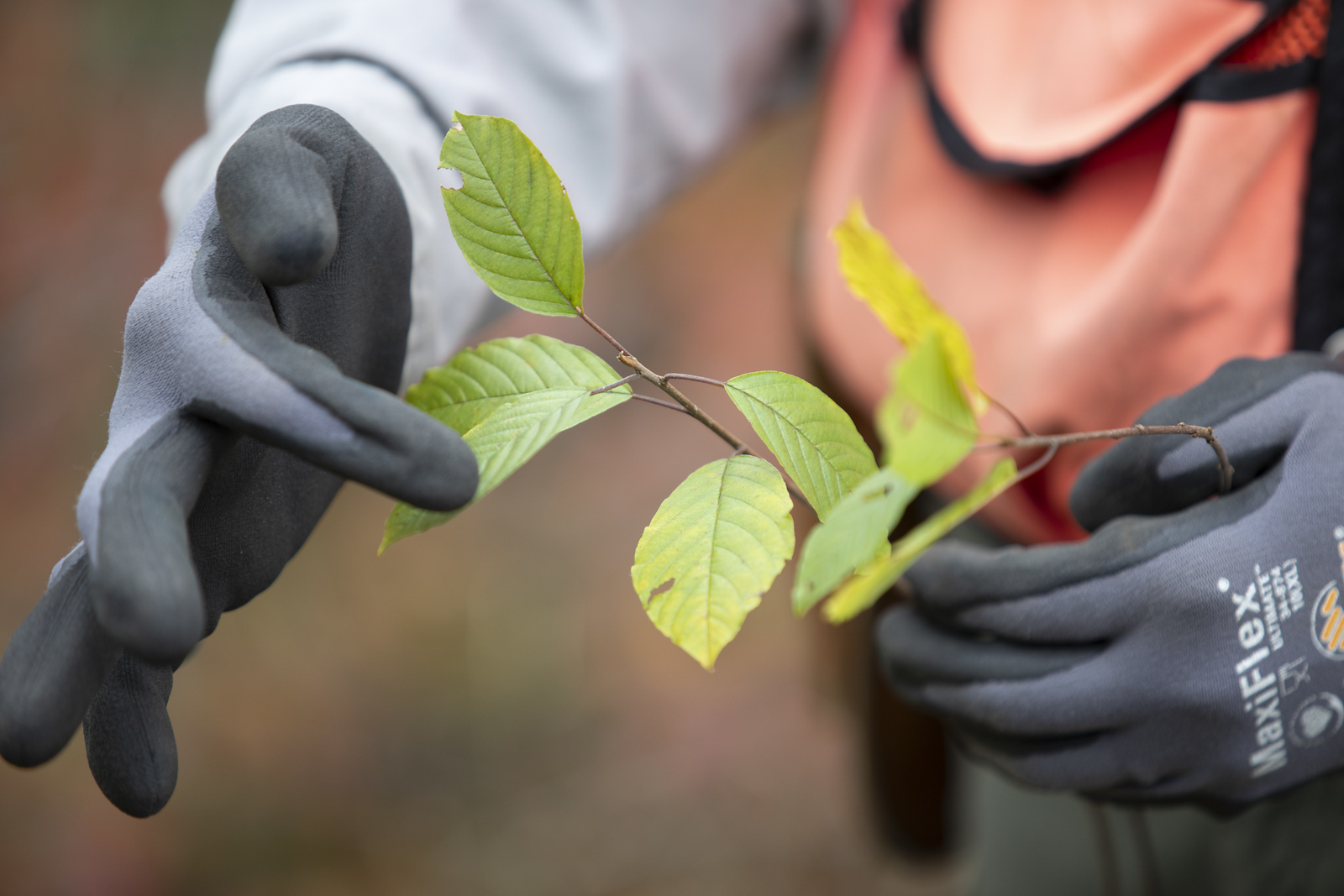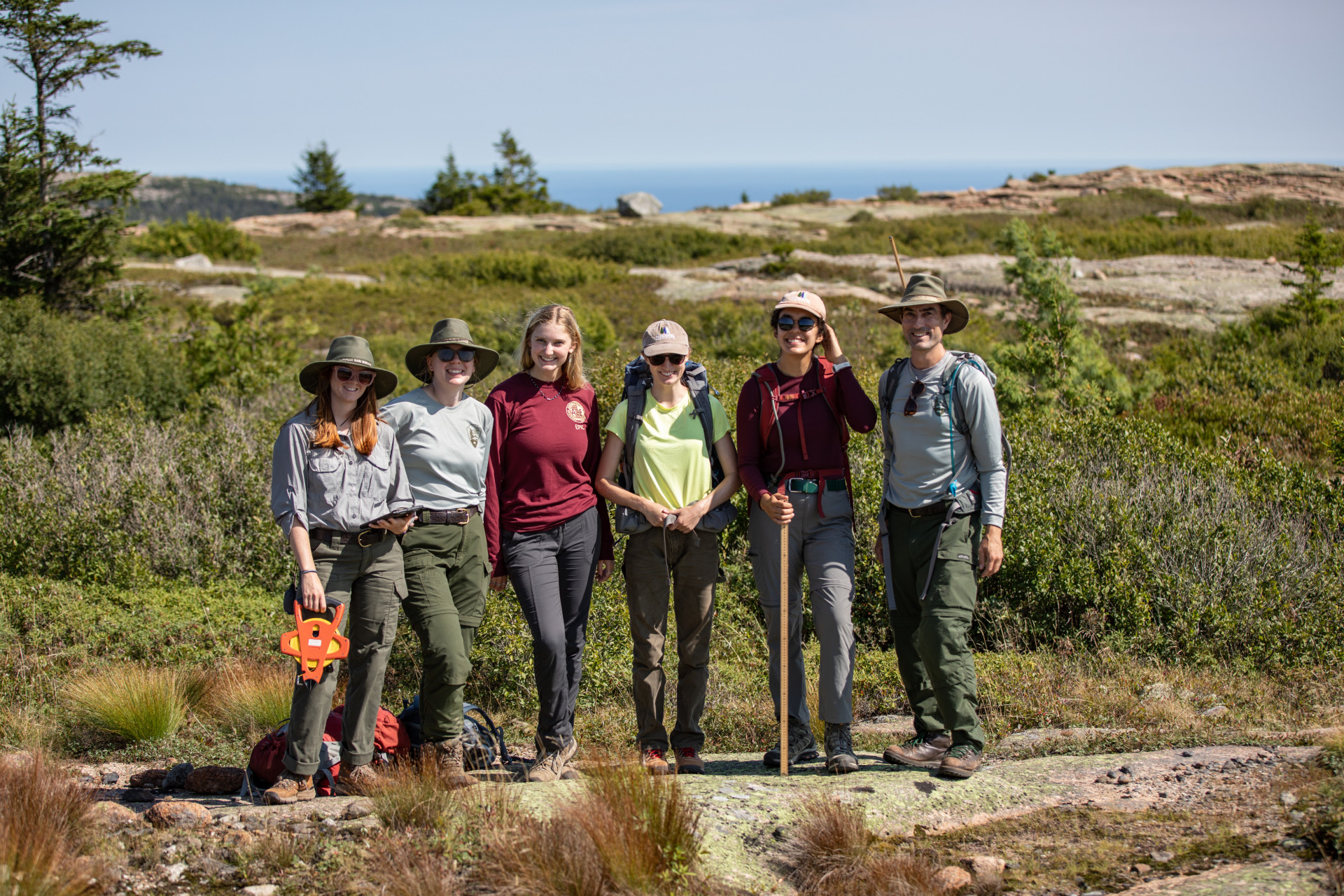Soil at Work
Restoration has begun on Sargent and Penobscot Mountains thanks to volunteers who hiked up a critical component: the soil.
March 6th, 2024
Restoration has begun on Sargent and Penobscot Mountains thanks to volunteers who hiked up a critical component: the soil.
March 6th, 2024
BY LAUREN GIBSON
On a bright and sunny day last June, 72 volunteers hiked to the tops of Sargent and Penobscot Mountains in Acadia National Park with bags of soil in their backpacks. By the end of the day, they’d carried up 1,500 pounds of soil, dropping them off at piles on each summit.
Those volunteers were taking part in the first-ever Save our Summits event, hosted by Friends of Acadia, Acadia National Park, and Schoodic Institute. And that soil had an important role to play in vegetation restoration on the summits.

Heidi Serman, left, Acadia’s volunteer program assistant, and Molly Bogner, right, Friends of Acadia Summit Steward, organize bags of
soil. (Photo by Sam Mallon/Friends of Acadia)
Perhaps you carried soil that day. Perhaps you’ve been wondering what happened to that 5, 10, or 15-pound bag of soil you carried. Well, it’s currently hard at work.
Jesse Wheeler, vegetation program manager for Acadia National Park, and Chris Nadeau, climate change adaptation scientist at Schoodic Institute, had a plan for that soil even before it ever made it to the top of the mountains.
Summit restoration has been taking place on nearby Cadillac Mountain as part of phase one of active restoration, and Acadia’s Resource Management Team and partners were ready to implement active summit restoration in new areas. The only problem was how to get enough soil up to sites that don’t have roads going straight to them (as Cadillac
Mountain does). That’s where volunteers from the Save our Summits event and subsequent volunteer groups throughout the summer helped. All in, a total of 3,765 pounds of soil was carried through people-power to the mountain tops last year.

Emma Lanning, Acadia National Park biological science technician, and Beth Jaufmann, Student Conservation Association intern, place burlap
over a freshly restored plot on Sargent Mountain. (Photo by Edward Meunnich)
Once scientists knew the exact amount of soil that was ready to be used for summit restoration, they put their plan into action and mapped out the precise locations for the restoration plots. The restoration team decided to focus efforts on social trails—footpaths off official trails that are formed over time by errant hikers.
When choosing which particular social trails to utilize, they selected areas that were non-sloping (to prevent erosion) and were absent of most vegetation—but did have vegetation adjacent to them (to hold soil in and encourage existing vegetation to spread into the restoration plot).

Jesse Wheeler, Acadia National Park vegetation program manager, and Lundy Stowe, biological science technician, measure and map areas of erosion on Sargent Mountain. (Photo by Julia Walker Thomas/Friends of Acadia)
The team turned 29 social trails into restoration plots last fall: 19 on Sargent and 10 on Penobscot.
Applying learnings gathered from phase one (namely that soil, erosion fabric, and time are all restoration essentials), scientists and research technicians went to work. They
started by spreading 4 cm of soil over the social trails. After that, half of the plots were seeded—seed was broadcast over the soil – and half were not. Time will tell whether those plots will be seeded naturally.
If results show there is no difference between the plots, and thus seeding is not required, this will greatly reduce the cost of future restoration. A biodegradable erosion fabric was placed on top and held in place using stakes and burlap bags.
Now, we all optimistically watch as nature takes over and monitoring begins.
“We’re partly there!” said Nadeau. “Hundreds of volunteers moved soil to the summit and we’re thankful for that.”
He’s hopeful that, as these sites are monitored over time, vegetation will become established, grow, and spread, preventing further soil erosion. He’s also excited to be able to share these restoration techniques with others. While Acadia is not alone in seeing vegetation disappear from summits, learning-based summit restoration is not happening elsewhere, according to Nadeau.

NPS and Schoodic Institute staff, and NPS Academy Intern Geondica Stryker, pose for a photo after mapping areas of
erosion on Sargent Mountain. (Photo by Julia Walker Thomas/Friends of Acadia)
Climate change isn’t the only challenge scientists face when attempting to keep—and restore—vegetation on summits.
Fewer than 24 hours after restoration plots were established on Sargent Mountain, a footprint was observed in one. People, their behavior, and how they interact with these plots will
also determine their success.
“Will people understand what these plots are, why they are here, and will they respect them?,” Wheeler wonders. “Our job now is to communicate responsible stewardship on this landscape.”
It’s imperative to observe Leave No Trace principles—follow official trails and walk only on bedrock (do the rock walk!) – when experiencing Acadia’s summits.
What does the future look like for this learning-based restoration project? Only time will tell. Stay tuned as we watch what this soil can really do.
LAUREN GIBSON is Friends of Acadia’s Wild Acadia Coordinator.